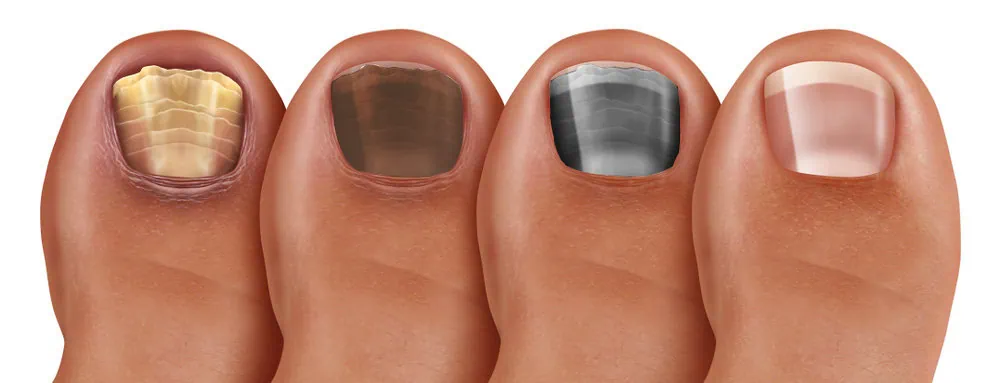

Are You Annoyed with Toenail Discoloration? Should You Worry and What Can You Do?
Toenail discoloration is a common concern for many patients, and the most common complaint is yellow discoloration. The yellow discoloration can present itself in different forms. The nail itself may be discolored on the end of the nail or the entire nail. It may be thickened and crumbly which can lead to pain. Visually, it is easy to tell when a nail appears yellow, but what is causing this to happen?
The majority of this yellow toenail discoloration is onychomycosis which is the medical term for toenail fungus. This fungus can arise from several different causes:
Trauma: Any forms of trauma to the nail can lead to infection. It is thought that trauma to the nail itself can allow the fungus to get inside the toenail. A toenail crack for insurance is an example of this.
Immune System Suppressing Diseases: Autoimmune diseases or medications that suppress the immune system may also be a cause. As an example, diabetics may have a suppression of their immune system as part of the disease, and more commonly have fungal nails.
Nail Polish: Yes, nail polish! Wearing toenail polish for extended periods of time may also make the nail less healthy and be a cause for unwanted infection.
Improper Shoe Wear: If shoe gear constricts your feet too much, it can be a cause for irritation and infection.
Moist Environments: If you work around water a lot and your feet are wet for long periods of time, this could also promote toenail fungus.
Medications: Various medications may also be a possible cause especially if they suppress the immune system.
Genetics: Finally, your genetics. It’s this doctors’ experience that this can be the primary reason for most people. That is why with married individuals, one person may be more prone to suffering and the other never does.
What are Different Treatment Options for Toenail Discoloration?
Topical Treatments: This may include various brand-name topicals that can be purchased online or at a drugstore. Topical application of vitamin E or VapoRub has been reported to help. The challenge with topical treatments is the challenge to get penetration into the nail. Tips for using topicals:
- Start early when you first notice the yellow discoloration – If the toenail discoloration or thickness is advanced, there may be little chance of this option working.
- Because nails take 9 months to fully grow out, topical treatments should be done for 3- 4 months. Look for clearing at the base of the nail where it grows out and if none is seen there’s a chance this option isn’t working. Length of treatment is very important
Oral Medication: Lamisil is an effective treatment option and its’ thought to help in 40-60 percent of cases. However, this drug is known for its liver toxicity. If it’s considered, it should only be used in healthy individuals. It should also not be used in combination with medications that already may be affecting the liver, which is a common problem in diabetics. Also, when used, a liver panel should be performed before initiating treatment to make sure liver damage is not already present.
Toenail Laser Treatment: We have been using lasers to destroy fungus for 13 years and were the first to bring this treatment option to the Rocky Mountain region. We have had great success with this treatment option. Lasers work on the basis of heat. Our pinpoint laser pulses light into the nail. Because it’s pulsed, there is little to no pain. There are no-known side effects of toenail laser treatment. If a nail is thickened, we have special grinders that are used to thin the nail so the laser can penetrate better. There is also no down time. You can go back to full activity immediately. We consider this as the best option for our patients and the laser treatment costs are much lower that most people expect.
Psoriasis: This can also cause nails to be yellow. It can present with yellow and sometimes brownish spots on the nail. It’s not difficult to diagnose as most patients will also present with Psoriasis on their arms and legs.
Black Toenail – Causes and Treatments

Fungus: Sometimes, fungus will have a darkened appearance rather than the more common yellow discoloration.
Malignant Melanoma: Skin cancer may also be black in appearance. It will often not involve the entire nail but will be a linear very dark line.
Finally, it’s important to consider seeing a doctor for a black toenail. This is especially true if you do not recall trauma to the nail, or wearing a shoe that may have been the cause.
What are options for treatment of black toenail discoloration?
Black Toenails may go away as the new nail grows out. If it’s caused by fungus, then treatment options for fungus may be considered. In some situations, if the cause is trauma, removal of the nail may be considered especially if the attachment of the nail to the skin is disrupted. This can allow the new nail to grow out healthier.
Brown Toenail – What can cause this?
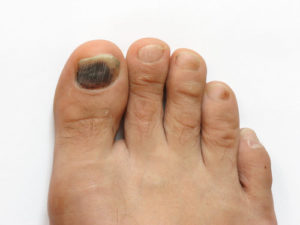
Malignant Melanoma: Although usually black in color, a melanoma could also have brown toenail discoloration.
Injury: Again, an injury or too tight of a shoe may cause a brown toenail.
Green Toenail
A green toenail can be caused by a bacterial infection to the nail. This condition is called chloronychia and is caused by bacteria that thrives in damp and moist conditions. If you think this is you, it’s important that you seek medical treatment for this condition!
White Toenails
If the nail appears to have large white powdery patches on the surface of the nail, this can be a fungal infection. In this presentation the fungus is on the surface of the nail rather than deep within the nail.
Very Thick Nails
Finally, you may have seen nails that are very thick. This can be very unsightly and even painful. A few different causes to this include fungus and trauma. Severe damage to a toenail can create a nail that grows back thickened. Different treatments for these symptoms include periodic trimming, grinding, laser, and topical or oral medications. Lastly, removal of the nail. The podiatrist may consider this as your best option. In the clinic, the nail is removed and a chemical is applied to the area that kills the cells that make the nail. Most patients require no pain medication and can return to full activity immediately. It is important to note that these treatments should always be discussed with your doctor or podiatrist.
Frequently Asked Questions
1. How can I fix toenail discoloration?
Toenail discoloration can occur due to various factors like fungal infections, trauma, or repeated exposure to nail polish. To fix it, start by trimming and cleaning the nails, soaking them in an antifungal solution if an infection is suspected, and allowing them to breathe by taking a break from nail polish. If discoloration persists, consult a podiatrist to rule out more serious conditions.
2. Why is my toenail turning brown?
A brown toenail could be due to trauma (such as stubbing your toe), fungal infections, or even pigmentation issues. Nail trauma can cause blood to collect under the nail, creating a brown or blackish hue. If the discoloration is due to a fungal infection, over-the-counter antifungal treatments may help, but persistent cases often need professional care.
3. Can nail polish cause toenail discoloration?
Yes, nail polish, especially dark shades, can stain the nails, resulting in yellow or brown discoloration. To prevent this, apply a clear base coat before colored polish, and give your nails a break between applications to let them “breathe.” If discoloration persists after removing the polish, try a gentle buffing and soak the nails in lemon juice or a baking soda paste for a natural brightening effect.
4. Why is my big toenail discolored?
The big toenail is more susceptible to discoloration because it’s often the nail most likely to experience trauma or fungal infections. It also bears the brunt of pressure from shoes and may be more affected by dark nail polish. If you notice persistent discoloration, unusual thickness, or changes in shape, it’s best to see a healthcare professional to rule out conditions like onychomycosis or other infections.

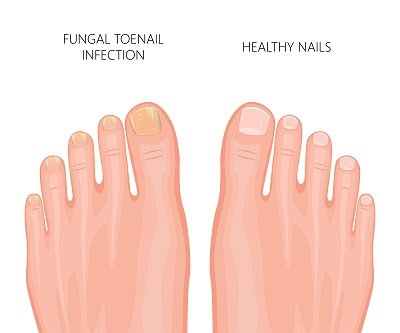
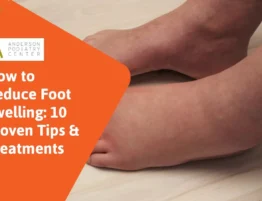
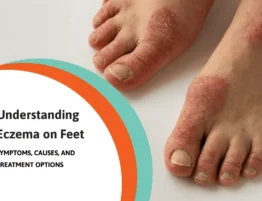


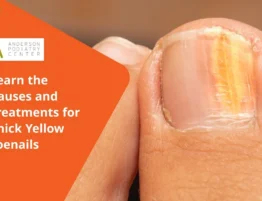
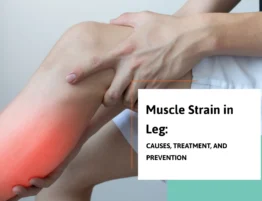
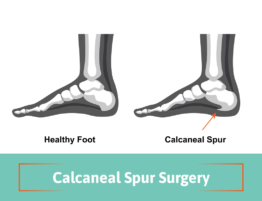
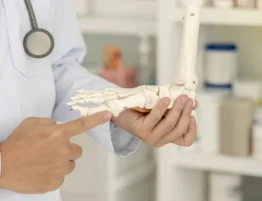
Write a comment: